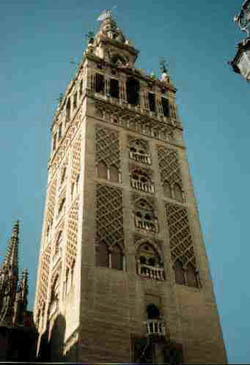 |
The Saint of the Day
St. Justus of Canterbury – November 10
Prof. Plinio Corrêa de Oliveira
Biographical selection:
St. Justus (d. 627) was one of the companions of St. Augustine of Canterbury in his work of the conversion of England. In response to one of his consultations, St. Gregory the Great wrote him:

St. Gregory the Great and St. Augustine of Canterbury |
“When you are with our brother Augustine, tell him that after long consideration and careful examination of the English question, I judged that you should not destroy the pagan temples, but only the idols in them. You should purify them with holy water, take the idols from the altar, and put relics of Saints there.
“For if these temples are well built, let them pass from the worship of the Devil to the service of the true God. If the people see that the places to which they are accustomed are conserved, they will go to them more readily. And since they are used to sacrificing bulls to the Devil there, some solemn ceremony related to the martyrs whose relics are there should replace this. You should raise tents around the temples transformed into churches and celebrate the feast there with meals. Instead of sacrificing animals to the Devil, you should kill them for the people to eat and give thanks to God, Who gave them the food. This way, apart from the sensible manifestations of joy, they can more easily be introduced to the spiritual joys [of the Faith]. For it is impossible to detach all the customs at once from hardened spirits. By moving slowly, one goes far.”
Comments of Prof. Plinio:
This letter is very interesting for its statement – which we can find in many writings of the Church Fathers and Doctors – that all the gods of the gentiles are devils. This principle is in Scripture: Omnia dii gentium sunt daemonia (Psalm 95: 5), referring to the gods of pagan peoples. It is a very strong expression and it is profoundly anti-ecumenical.
This letter also is very anti-ecumenical. It is very ductile, very malleable in the things that are not fundamental, and enormously severe about the things that are really important. The temples of those pagan nations were not at all like today’s modern art and architecture. Modern art is a violent and blasphemous denial of truth and good. It imposes arbitrary artistic styles that generally affirm disorder and ugliness. Obviously, modern art is not appropriate for a Catholic church. But those pagan English temples were built following other artistic schools. They lacked the elevation of the gothic, but followed certain dignified artistic schools that had true elements of beauty and could adequately serve Catholic worship.

Above, the Iron Pagoda in China
has elements suitable for Catholic worship.
Below, the tower of the Cathedral of Seville, once a mosque.
 |
If you take a noble and beautiful Chinese pagoda, for example, it has the necessary elements to house Catholic worship for a Chinese nation. Of course, if we were to build a place for worship, we would not build a pagoda, because one has the obligation to make the best for God. But when one receives something from others, one has to accept what is adequate.
When the heroes of the Reconquista conquered the cities where the Moors had built beautiful mosques – Corboba and Granada, for instance – they purified them, removed all the symbols of Islamism, and installed the Catholic worship. Until today, Catholic worship continues to be celebrated in such places. When her army took Granada, one of the main concerns of Isabella, the Catholic Queen, was to celebrate a Catholic Mass there. It was the principal symbol of the victory over Islam.
This was precisely the same advice that St. Gregory the Great gave to St. Justus and St. Augustine. If the pagan temples were well built and adequate for worship, they could take advantage of them. He also gave a psychological reason for doing this: the people were accustomed to go there. The habit of going to a place breaks the inhibition of going to a service from another faith when it is in the same place.
You can see the healthy intransigence of St. Gregory with regard to what was really necessary, and his great ductility regarding the secondary things that did not touch on the principles. This does not mean one should be intolerant regarding primary principles and tolerant with respect to secondary principles. This would be wrong. We cannot admit any concession in principles. But the part of reality that is not touched by the principles should be handled with this broad spirit.
St. Gregory also counseled them to raise up tents around the churches so the people could enjoy eating together. Then they could be taught to thank God for these good things. It was a way to attract the simple people. They like to eat. God gave the apple, the German made the apfelstrudel [apple strudel], and he likes to eat it with his friends. It is a legitimate joy, according to the Catholic spirit. Catholic England also liked to eat. It was born amid this sort of kermis.
Let us ask St. Justus along with St. Augustine of Canterbury and St. Gregory the Great to give us the understanding and love for the Catholic balance between intransigence and ductility that they applied in their apostolate. Without intransigence, we cannot maintain the purity of principles; without ductility we cannot apply them and make the apostolate flourish. Such equilibrium is a magnificent fruit of the Catholic spirit we should acquire.


  | | Prof. Plinio Corrêa de Oliveira | |
The Saint of the Day features highlights from the lives of saints based on comments made by the late Prof. Plinio Corrêa de Oliveira. Following the example of St. John Bosco who used to make similar talks for the boys of his College, each evening it was Prof. Plinio’s custom to make a short commentary on the lives of the next day’s saint in a meeting for youth in order to encourage them in the practice of virtue and love for the Catholic Church. TIA thought that its readers could profit from these valuable commentaries.
The texts of both the biographical data and the comments come from personal notes taken by Atila S. Guimarães from 1964 to 1995. Given the fact that the source is a personal notebook, it is possible that at times the biographic notes transcribed here will not rigorously follow the original text read by Prof. Plinio. The commentaries have also been adapted and translated for TIA’s site.
|
Saint of the Day | Home | Books | CDs | Search | Contact Us | Donate

© 2002- Tradition in Action, Inc. All Rights Reserved
|
 |

|